Are you looking to establish a meaningful partnership with government entities? Crafting the perfect letter can set the tone for collaboration, making your intentions crystal clear while maintaining professionalism. A well-structured letter template not only outlines your objectives but also showcases the potential benefits of a partnership. Ready to dive deeper into creating an impactful letter? Let's explore the essential elements you need to include!
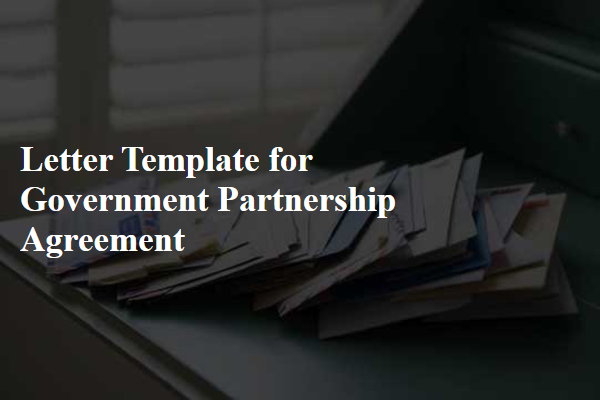
Clear objectives and goals
A government partnership agreement establishes clear objectives and goals to foster collaboration between public entities. These objectives may include enhancing community services, improving infrastructure projects, or addressing specific social issues within a locality. For instance, a partnership might aim to reduce unemployment rates by 15% in economically disadvantaged neighborhoods over a three-year period. The goals should be measurable, with defined metrics, such as the number of job placements through training programs or small business grants. Establishing timelines, accountability frameworks, and resource allocation ensures all parties are aligned towards the common mission. This strategic approach promotes transparency and facilitates effective communication among partners, ultimately driving successful outcomes for community development initiatives.
Roles and responsibilities
A government partnership agreement outlines the roles and responsibilities of entities involved in collaborative initiatives, ensuring clarity and accountability. Within the framework, the government agency (such as the Department of Health) may be responsible for funding allocation, regulatory compliance, and program oversight. The partnering nonprofit organization (like Community Health Services) often undertakes direct service delivery, outreach efforts, and data collection for performance evaluation. Specific roles include the government's obligation to provide training resources and the nonprofit's duty to maintain transparency in financial reporting. Additionally, joint responsibilities may encompass regular communication meetings, shared documentation, and collaborative impact assessments to enhance program effectiveness and comply with community needs.
Legal compliance and regulations
A partnership agreement between government entities necessitates rigorous legal compliance, reflecting adherence to local, state, and federal regulations that govern collaborative initiatives. The agreement should outline specific legal statutes, such as the Administrative Procedure Act, which governs rulemaking processes, ensuring transparency and accountability. Furthermore, compliance with the Federal Acquisition Regulation is essential when addressing procurement processes, particularly in contracts exceeding $250,000. The inclusion of necessary permits, licenses, and regulatory approvals based on the operational jurisdiction of the partnership--be it environmental, health, or safety regulations--is crucial. Legal counsel must review all documentation to adhere to liability and risk management provisions tailored to public sector requirements.
Communication and reporting protocols
Effective communication and reporting protocols are vital for the success of government partnership agreements. Regular updates, such as monthly progress reports, allow stakeholders to remain informed about ongoing projects, funding allocations, and key performance indicators. Digital platforms, including specialized project management software, facilitate real-time data sharing and enhance transparency among partners. Scheduled meetings, ideally quarterly, enable discussions on challenges, achievements, and strategic adjustments, fostering collaboration and mitigating risks. Establishing clear guidelines for documentation, including formats and deadlines, ensures consistency in reporting and adherence to compliance requirements. Additionally, designated points of contact streamline communication channels, providing clarity in addressing inquiries and concerns related to project execution.
Termination clauses and dispute resolution
Termination clauses in a government partnership agreement provide clear guidelines for ending the collaboration under specific conditions. Situations such as breaches of contract, failure to meet performance standards, or changes in regulatory compliance can prompt termination. The parties involved must also be aware of any notice periods required, typically ranging from 30 to 90 days, allowing for a transition period. Dispute resolution mechanisms, essential for addressing conflicts, often include mediation and arbitration options. Mediation, a collaborative approach, involves a neutral third party facilitating discussions to reach a mutual agreement. If unresolved, arbitration follows, where an arbitrator makes a binding decision. Jurisdiction for legal issues could be specified to an appropriate court or tribunal, often determined based on the partnership's location, like the State of Maryland or the Federal District Court. These clauses ensure a structured process for both termination and conflict resolution, promoting a transparent and systematic approach to partnerships.
Letter Template For Government Partnership Agreement Samples
Letter template of government partnership agreement for community development projects.
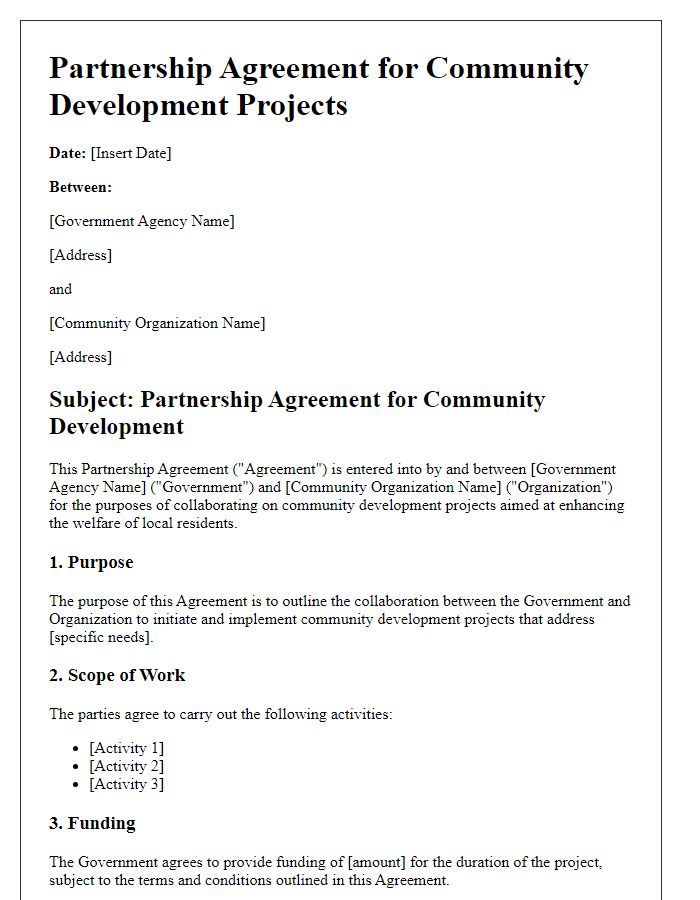
Letter template of government partnership agreement for educational initiatives.
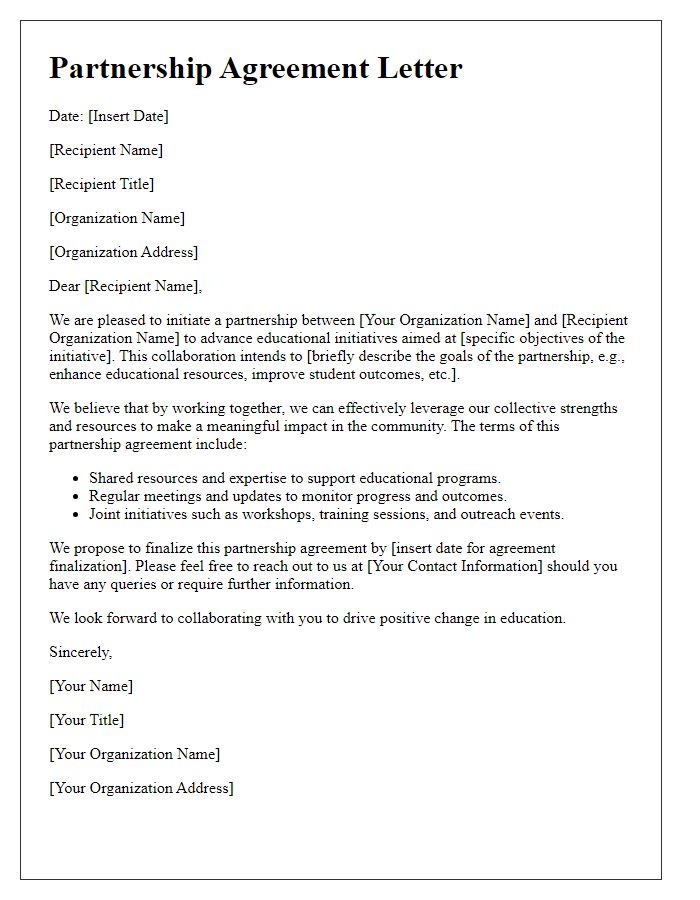
Letter template of government partnership agreement for public health services.
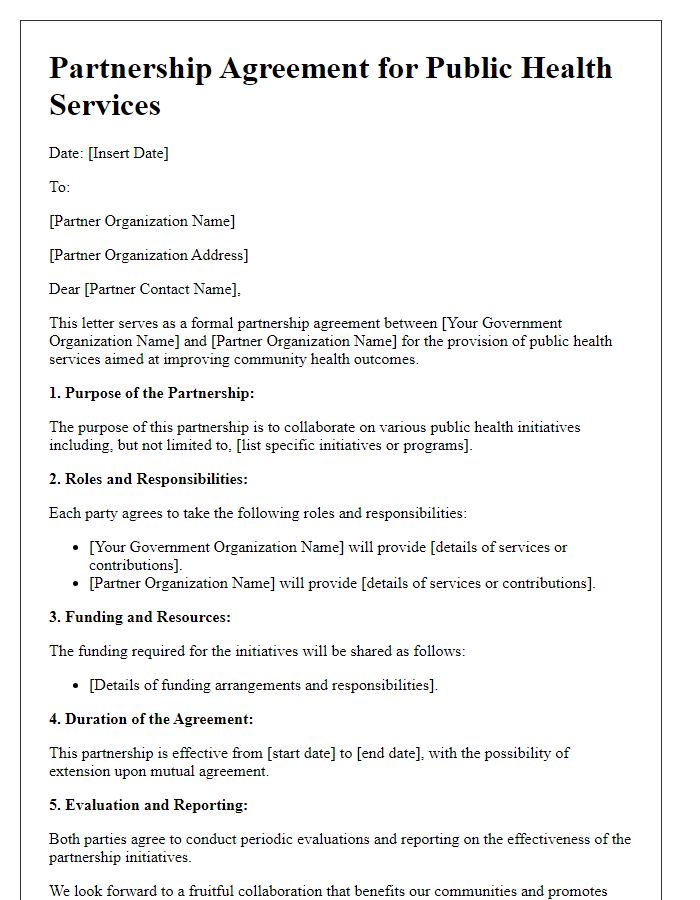
Letter template of government partnership agreement for environmental sustainability programs.
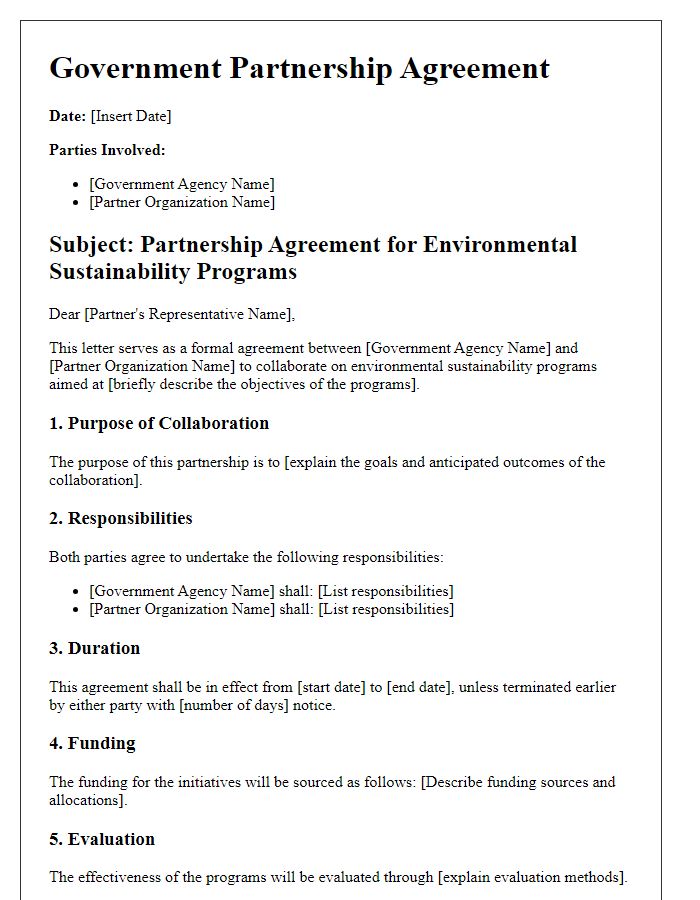
Letter template of government partnership agreement for infrastructure development.
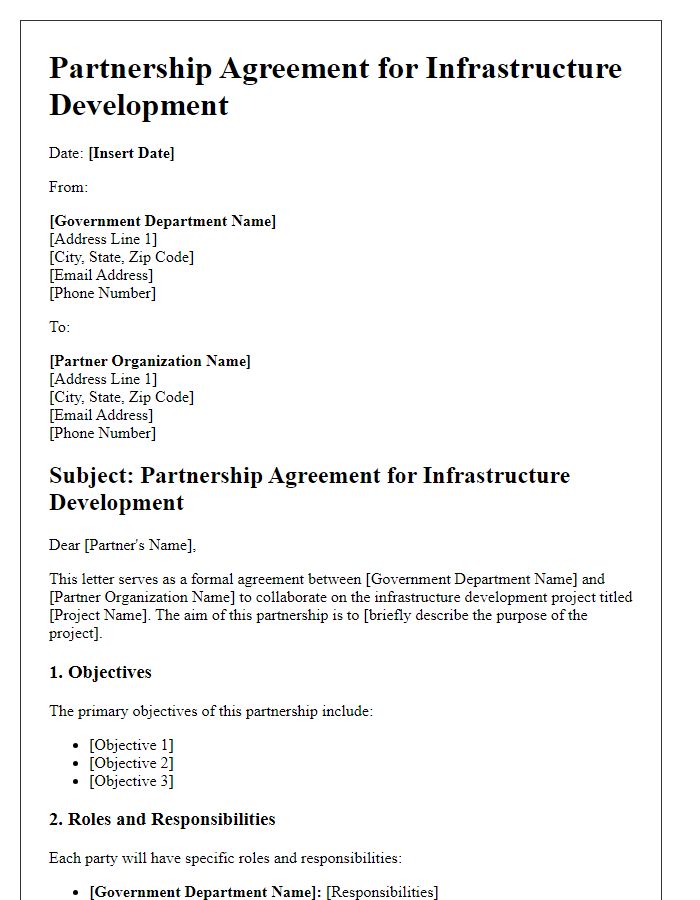
Letter template of government partnership agreement for tourism promotion.
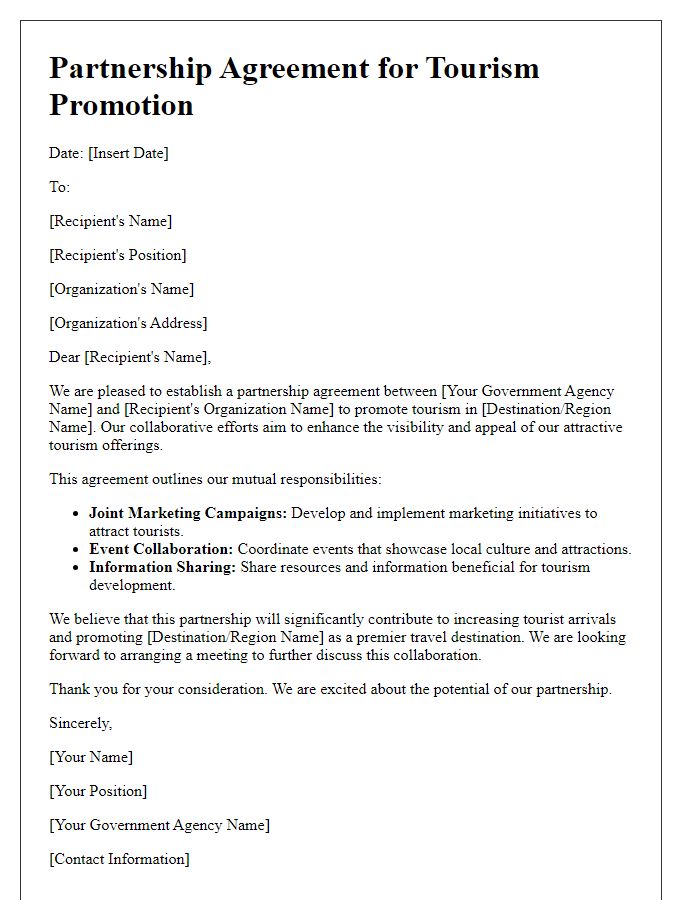
Letter template of government partnership agreement for technology innovation projects.
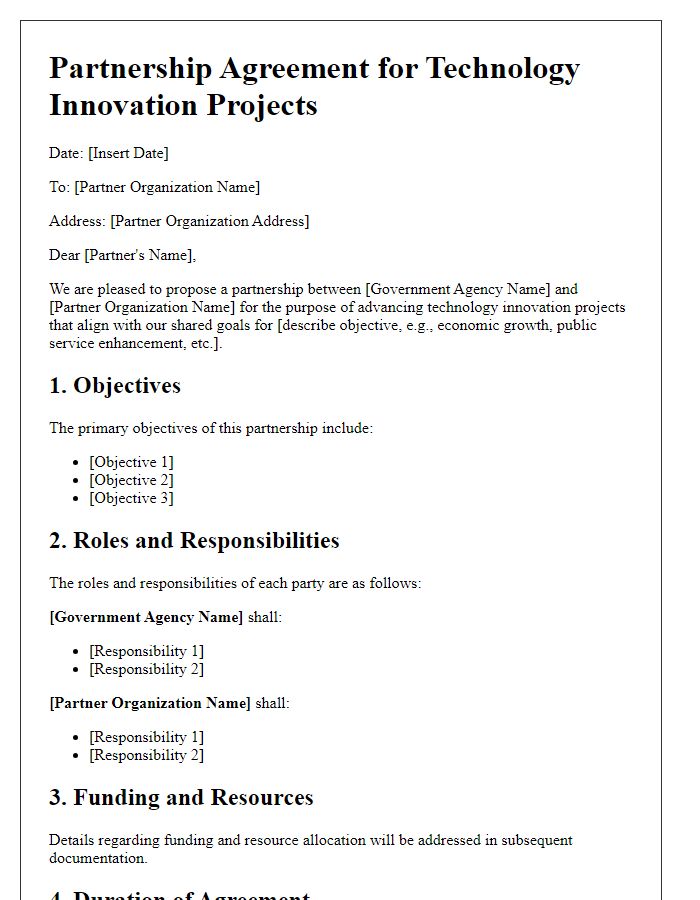
Letter template of government partnership agreement for cultural exchange initiatives.
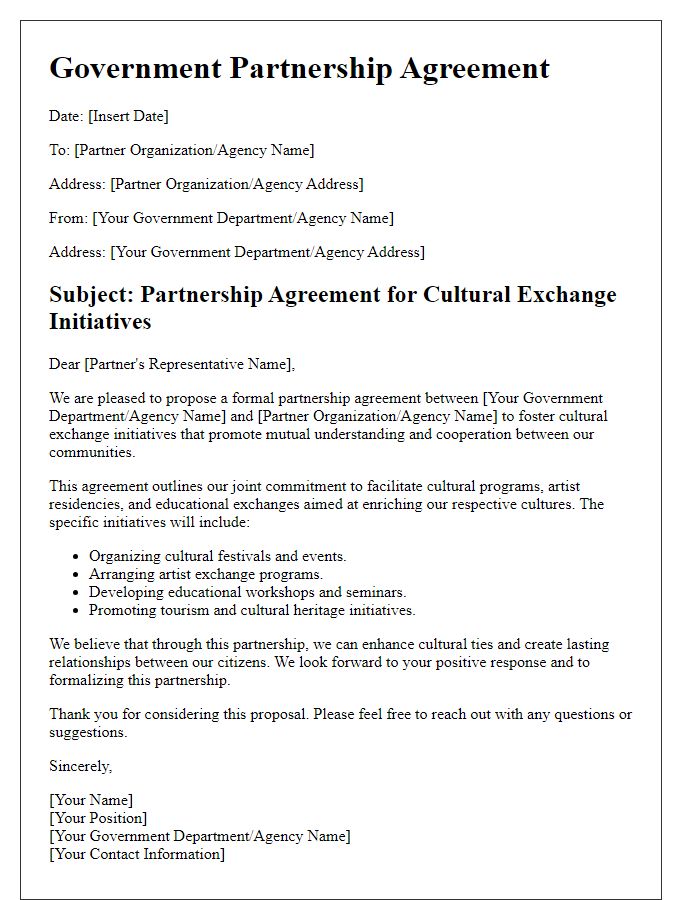
Letter template of government partnership agreement for disaster response collaboration.
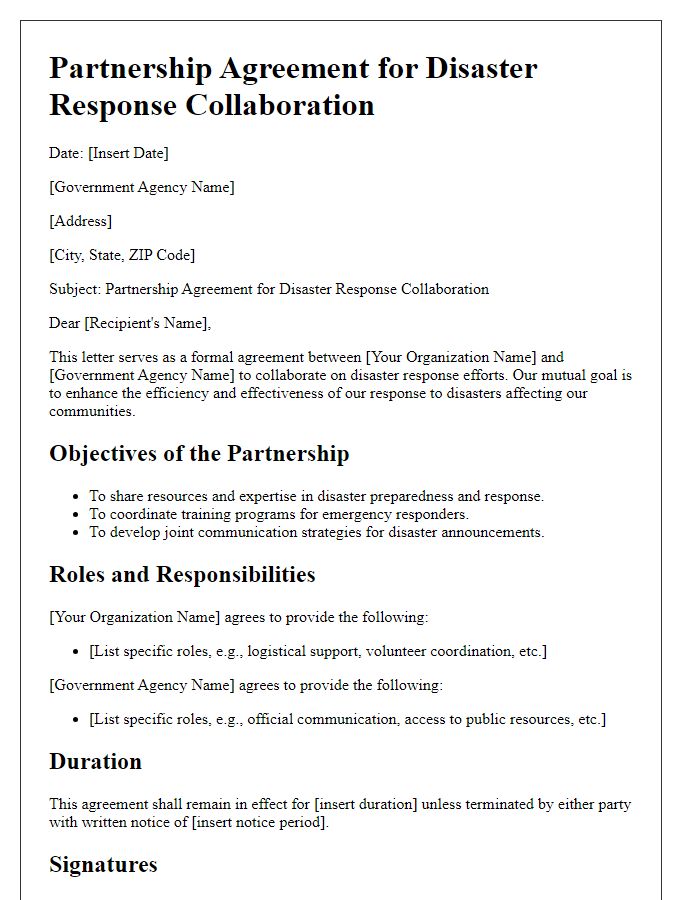

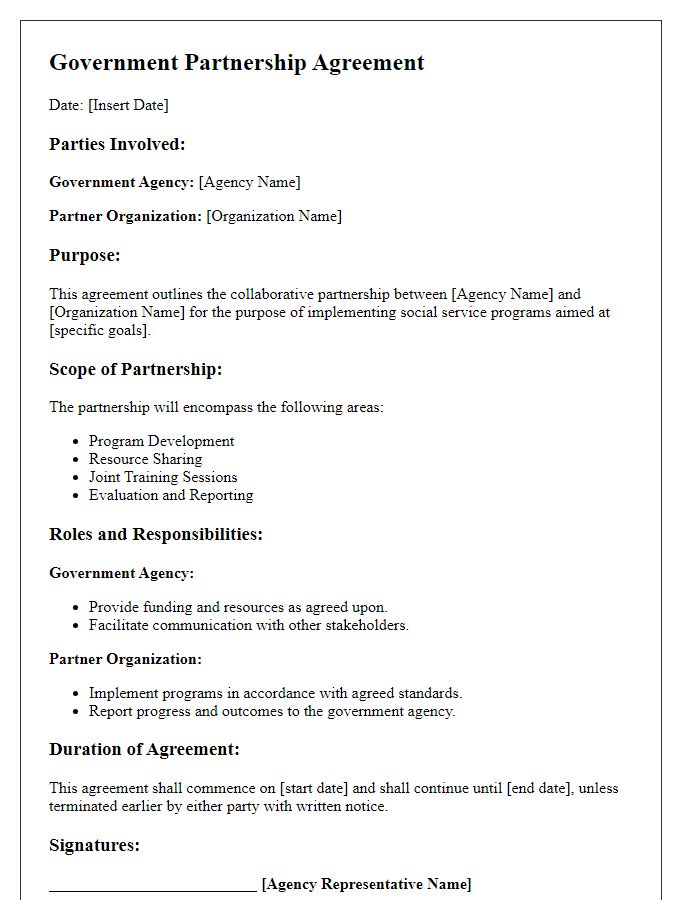

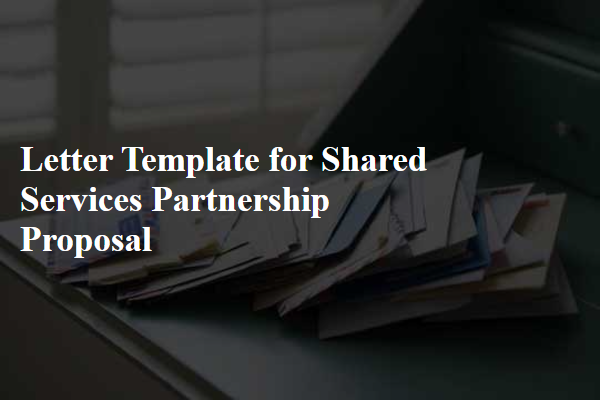
Comments